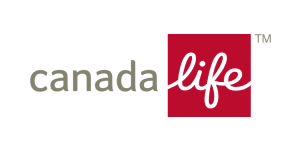Understanding Permanent Life Insurance
Permanent life insurance is essential for Canadians due to its lifelong coverage, cash value accumulation, and tax advantages. Unlike term life insurance, which has a set duration, permanent policies provide protection until the policyholder’s death. Additionally, the cash value component allows tax-deferred growth, offering flexibility and financial resources during one’s lifetime. While initial premiums may be higher, the long-term benefits make permanent life insurance a valuable choice. Consider speaking to an advisor to explore your options further!
Key Benefits
Having a permanent life insurance in Canada offers several key benefits:
Lifelong Coverage:
Unlike term insurance, permanent life insurance provides coverage throughout your entire life. Your beneficiaries are guaranteed a death benefit whenever you pass away, as long as you’ve paid your premiums.
Tax-Free Death Benefit:
The money from the death benefit is tax-free for your loved ones to use as they need.
Cash Value:
Some permanent life insurance plans include a cash value component. This tax-preferred savings portion can grow over time and provide potential borrowing options. Keep in mind that withdrawing funds from the cash value may reduce your policy’s death benefit.
Stable Premiums:
Permanent life insurance premiums typically remain consistent over time, unlike rising term insurance rates.
Different Types of Permanent Life Insurance
In Canada, there are three main types of permanent life insurance:
Whole Life Insurance
This plan provides lifelong coverage without expiration. Your beneficiaries receive a tax-free death benefit when you pass away, as long as you’ve paid your premiums. Whole life insurance also accumulates cash value over time, which you can access or borrow against.
- Coverage: Whole life insurance provides lifelong coverage. As long as you pay your premiums, your beneficiaries receive a tax-free death benefit when you pass away.
- Cash Value: Over time, your policy accumulates cash value. This value grows at a guaranteed rate and can be accessed during your lifetime. You can also borrow against it.
- Premiums: Premiums are typically higher than term life insurance but remain level throughout the policy.
- Stability: Whole life insurance offers stability and predictability.
Universal Life Insurance
With universal life insurance, you have greater payment flexibility. You can adjust your premiums and death benefit as needed. It also includes an investment component, allowing you to choose from various investment options based on your risk profile.
- Flexibility: Universal life insurance allows greater flexibility. You can adjust your premiums and death benefit as needed.
- Investment Component: It includes an investment component where you choose from various investment options. The returns affect your policy’s cash value.
- Risk and Reward: While it offers potential for higher returns, there’s also more risk due to market fluctuations.
- Transparency: You can see how your policy’s cash value changes based on investments.
Participating Life Insurance
This type combines lifelong coverage with the opportunity to earn policy dividends. The dividends can be used to increase your cash value or reduce premiums. Participating life insurance offers stability and growth potential.
- Dividends: Participating life insurance policies participate in the insurer’s profits. You may receive policy dividends.
- Use of Dividends: Dividends can be used to increase your cash value, reduce premiums, or purchase additional coverage.
- Steady Growth: It combines lifelong coverage with steady growth potential.
- Community: Participating policies benefit from the overall performance of the insurer’s portfolio.
Tips for Saving Money on Permanent Life Insurance
At HealthRates.ca, our goal is to help you maximize your savings. The most efficient way to save on life insurance is by comparing rates from different providers, which can be a time-consuming task. Fortunately, HealthRates.ca simplifies this process for you. Using our online quote request feature, we thoroughly evaluate rates from major Canadian insurers, ensuring you effortlessly receive the best options. Below are more straightforward ways to save money on getting permanent life insurance:
Compare Rates:
- Why: Different insurance providers offer varying premiums for the same coverage. By comparing rates, you can find the most cost-effective option.
- How: Use online tools or work with an insurance broker to obtain quotes from multiple insurers. Look beyond just the premium—consider the policy features, riders, and financial stability of the company.
Choose Term Policies:
- Why: Term life insurance provides coverage for a specific period (e.g., 10, 20, or 30 years). It’s generally more affordable than permanent life insurance.
- How: Assess your needs—such as income replacement, mortgage protection, or education expenses—and opt for term coverage accordingly. Avoid overpaying for unnecessary features.
Pay Annually:
- Why: Many insurers offer discounts if you pay your premiums annually instead of monthly.
- How: When selecting a policy, choose the annual payment option. This not only saves you money but also simplifies your budgeting.
Adjust Coverage:
- Why: As your financial responsibilities change (e.g., paying off debts, children becoming financially independent), you may need less coverage.
- How: Regularly review your policy. If you no longer require the same level of coverage, consider reducing it. Be cautious not to underinsure, though.
Quit Smoking:
- Why: Smokers typically pay significantly higher premiums due to health risks associated with smoking.
- How: If you quit smoking, inform your insurer. After a smoke-free period (usually one year), you may qualify for non-smoker rates.
FAQ’s – Permanent Life Insurance
Find even more valuable answers to the most commonly asked questions about permanent life insurance here:













